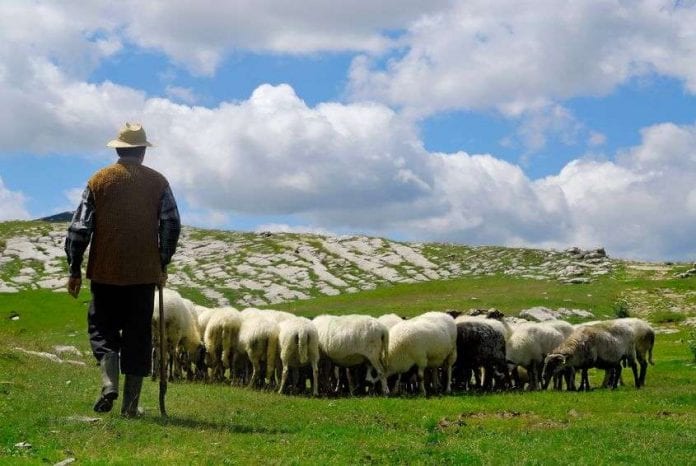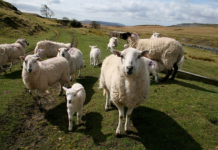Red clover can perform well in cell grazing systems on Welsh livestock farms if the leys are not over-grazed.
Farmers had the opportunity to seek advice from agronomist Helen Mathieu during a recent Farming Connect webinar on red clover; they included lamb producers with cell grazing systems.
“In a 25-day rotation in a cell grazing system, red clover will be fine as long as you don’t graze it below 5cm and avoid situations where there is too much pressure from stock and sheep paddling it in and damaging the crown,” said Ms Mathieu, of Germinal.
But caution is needed when using it in sheep systems, she added; avoid grazing it with ewes six weeks either side of tupping, even when the red clover content in a mixed sward is low as it can seriously diminish fertility.
This is generally only short term but continuous grazing of red clover may have a longer term effect on fertility, not just in the short term but chronically, Ms Mathieu warned.
Incorporating protein-rich red clover in pasture or conserved forage can help livestock and dairy farmers cut feed and fertiliser costs and improve performance.
Ms Mathieu described it as the ultimate homegrown traceable protein, either grown as a monoculture, mixed with ryegrass or incorporated into a multi-species ley.
“Animals will do better when there is red clover in the diet than just grass alone,” she said.
This is because 70% of the protein in grass can be lost in the rumen but clover has more rumen undegradable protein, which means livestock can make better use of that protein, as it is available to the animal after it passes through the rumen.
By following a few simple rules around establishment, red clover is not difficult to grow, Ms Mathieu advised.
Soil pH must be at a minimum of 6 – lime the field well in advance if not.
Aim for a soil with phosphate (P) and potash (K) at index 2; apply at a rate of 50kg/hectare (ha) at establishment.
Nitrogen (N) is not normally used except in soils with a very low N status, such as on light and sandy land where organic manures haven’t been applied.
When grown for inclusion in silage, the swards must only be grazed lightly in the autumn of the sowing year.
Aim to take the first cut between 20 May and 10 June in the following year, cutting when only 50% of the flower buds are visible.
“Cutting at an early flower bud stage is the optimum time, it gives you a good balance between yield and quality,” Ms Mathieu advised.
“You don’t want to cut it at a stage where you look across the field and all you see are flower heads.”
It has a high demand for P and K – for every tonne of dry matter (DM) removed apply 8kg of P and 27kg of K.
“For dairy farmers it is a very good opportunity to use slurry,” said Ms Mathieu.
Don’t mow below 7cm and aim for rapid wilting to avoid leaf shatter occurring – use a rubber roller conditioner to help prevent this.
The ley can be cut up to five times in a single year at intervals of six to eight weeks.
Graze the autumn regrowth but allow the plant to flower once a year. “If your last mowing in in early to mid-August it will be ready to graze five to six weeks later, when it is flowering,” said Ms Mathieu.
Persistency has improved with advances in plant breeding, with some varieties including IBERS-bred AberClaret and AberChianti extending productive life to five years.
One of the few pitfalls associated with growing red clover is attack by pests and diseases but problems can be avoided by using a crop rotation, said Ms Mathieu.
She recommends giving fields a five-year break after growing red clover, and even longer if pests and diseases have been a problem in the past.
Farming Connect, which is delivered by Menter a Busnes and Lantra, has received funding through the Welsh Government Rural Communities – Rural Development Programme 2014-2020, which is funded by the European Agricultural Fund for Rural Development and the Welsh Government.
Help keep news FREE for our readers
Supporting your local community newspaper/online news outlet is crucial now more than ever. If you believe in independent journalism, then consider making a valuable contribution by making a one-time or monthly donation. We operate in rural areas where providing unbiased news can be challenging. Read More About Supporting The West Wales Chronicle






















